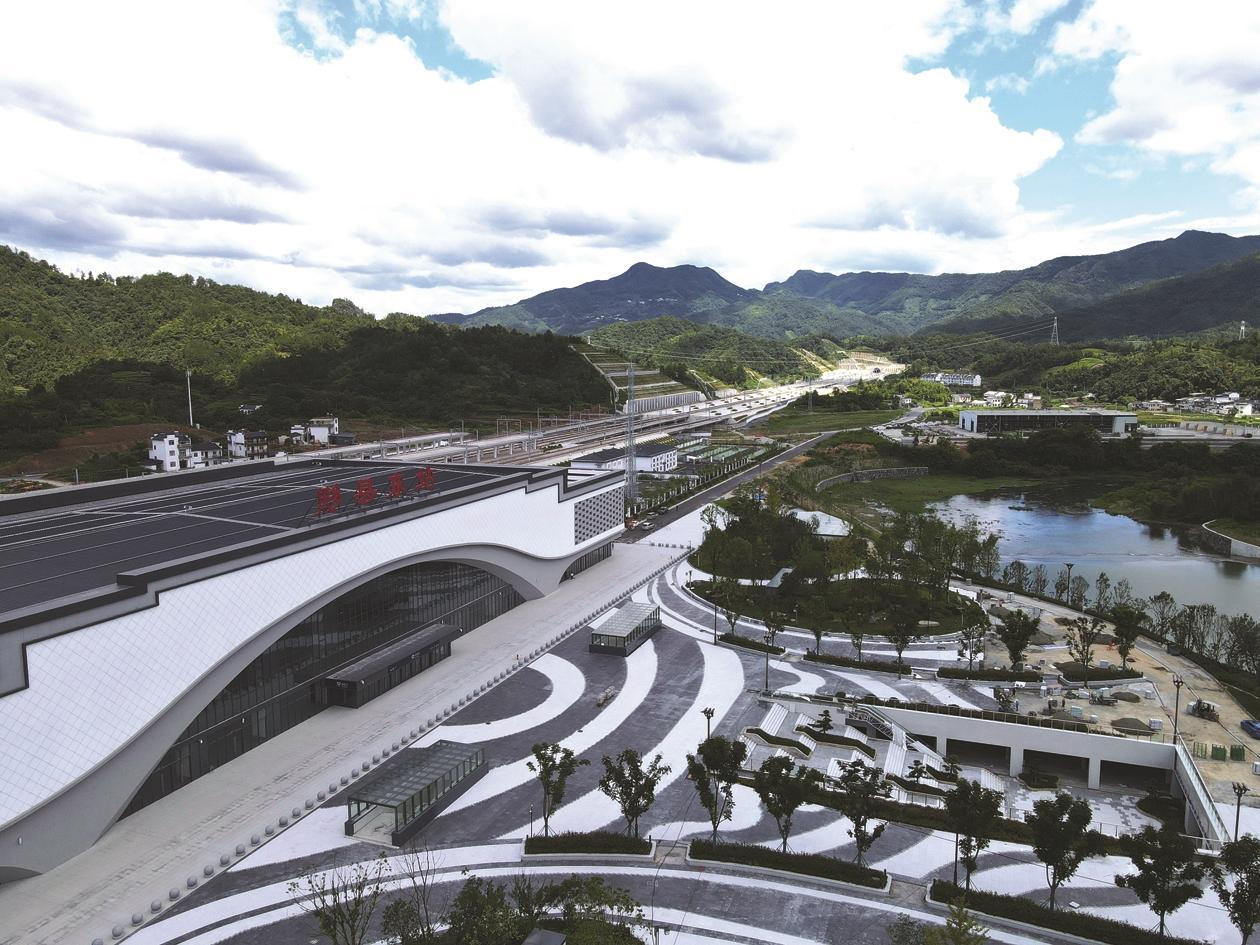
The Huangshan-Nanchang section of the Hangzhou Nanchang high-speed railway opened to traffic on December 27, said China Railway Corporation. This marked the official operation of the entire high-speed railway line.
The Hangzhou-Nanchang railway is another high-speed rail passage connecting Hangzhou with Nanchang after the completion of Hangzhou-Nanchang section of the Shanghai-Kunming high-speed railway. It starts from Hangzhounan Railway Station, passes Hangzhou in Zhejiang Province, Xuancheng and Huangshan in Anhui Province, and Jingdezhen, Shangrao and Nanchang in Jiangxi Province, and ends in Nanchang East Station. The entire length is 560 km. The Hangzhou-Huangshan section opened to traffic on December 25, 2018. The newly-finished section is 288 km in length, and the designed speed is 350 km per hour. The section has 10 stations of Huangshan North, Shexian East, Qimen South, Fuliang East, Jingdezhen North, Leping North, Poyang, Yugan, Jinxian North and Nanchang East. Of them, Huangshan North and Jingdezhen North stations are renovated ones.
In the beginning of its operation, the railway line plans to arrange work-day and weekend train schedules. After adjusting the train schedule in the first quarter of 2024, as more as 12 trains will run between Hangzhou West and Nanchang East. Ticket prices will be floatable and the price for a specific day can be found on “12306”, the official app of China Railway.
The Hangzhou-Nanchang high-speed railway is an important connecting line for China’s national railway line network. It connects a raft of nationally renowned tourist destinations, including the West Lake in Hangzhou, Qiandao Lakes, Huangshan Mountains, Poyang Lake, Jingdezhen City and Pavilion of Prince Teng. Along the railway line are nine state-level five-A-rated tourist destinations and more than 70 state-level four-A-rated ones. It is a tourist line connecting famous cities, towns, lakes and mountains in Zhejiang, Anhui and Jiangxi provinces. After the entire line opens, it will further improve the regional transportation network, facilitate the traveling of residents along the line and boost tourism and industrial development. It is also of great significance to the building of the Yangtze River Economic Belt and the integrated development of the Yangtze River Delt region.
Tourism
More+-

China's entry facilitation policies for foreign nationals
-

The new measure for the online submission of the Foreigner Arrival Card by foreigners entering China was implemented starting from November 20, 2025
-

240—hour Visa-Free Transit Policy for Foreigners
-

Entry, Exit and Residence Procedures—Visas
-

Instructions on Accommodation Registration for Overseas Visitors











 京公网安备
京公网安备